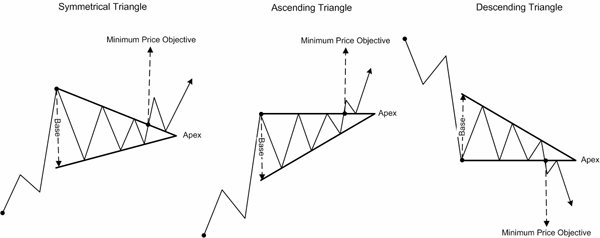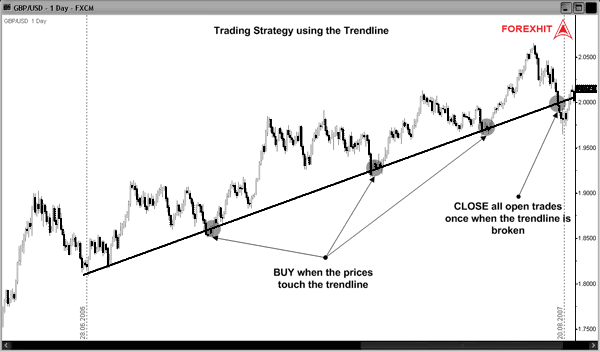Initial D Price Patterns in Forex Trading (silahkan gan pelajari)
Post on: 12 Апрель, 2015 No Comment

Selasa, 19 April 2011
Price Patterns in Forex Trading (silahkan gan pelajari)
12.1. What are Price Patterns?
Price patterns are pictures of price movement which have predictive value. These patterns reflect interaction between the bulls and bears on the market. Because this interaction is guided by the laws of mass human behaviour (or crowd trading psychology ), which are constant, the resultant price patterns will often have recognizable form and will usually lead to predictable price movements. In general, the longer it takes to build a price pattern and the higher it is — the bigger the potential for the price move after it. That you can accurately estimate the size of the future price move from the height of price patterns makes it easier to calculate your reward/risk ratio when you trade them. There are 2 types of price patterns reversal and continuation patterns.
12.2. Reversal Patterns on the Currency Markets
Reversal patterns occur before currency trends change direction to the opposite. Such patterns can be used to close existing positions opened during the previous trend and to enter new trades in the opposite direction. There should be a trend preceding reversal patterns for them to be valid. Commonly followed reversal patterns are head and shoulders, double and triple tops or bottoms. Reversal patterns grow stronger if they are supported by other technical studies (e.g. breaking of a major trendline. or indicator divergence ).
2.2.1. Head and Shoulders
Head and shoulders is one of the most reliable reversal patterns and is widely watched by currency traders. It is a top reversal pattern which develops when an uptrend loses it strength and prepares to reverse. This pattern involves 3 price peaks with the highest peak in the middle. Inability of the third peak (right shoulder ) to rise above the second (head ) signals weakness in an up trend. The pattern is completed when the prices close below the trendline (called neckline ) which connects the lows reached by prices after the first peak (left shoulder ) and the second peak (head). You can calculate the minimum price objective for the fall which should occur after the pattern is completed. To do this, simply find the pip distance between the head and the neckline and subtract this value from the level where the neckline is broken. It is often required to adjust the minimum price objective based on the other technical studies — like fibonacci retracements of the prior upmove or other major up trendlines (to increase the odds of an accurate exit). The maximum price objective will be complete retracement of the preceding up trend.
Currency prices will sometimes return to the neckline after it has been broken — presenting high reward/low risk shorting opportunity. If you trade this setup, place your initial take profit order at the level of the minimum price objective and your stop loss order — just a few pips above the neckline.
The head and shoulders pattern, occurring at market bottoms is called inverse head and shoulders. This bottom reversal pattern is an exact mirror image of the top reversal pattern. You can use the same method to calculate the minimum price objective for the rally which should occur after this pattern is completed.
Ideal Head and Shoulders pattern
Click to Enlarge. Chart Source — ProCharts .
12.2.2. Double Tops and Bottoms in Currency Trading
Double tops and bottoms are the next most frequently seen reversal patterns which are widely observed by the forex market participants. Double top is formed by two price peaks at approximately the same level. This pattern is completed when a currency pair closes below the lowest price that has been reached between the two peaks. The measuring technique for a double top is similar to that used for the head and shoulders — find the height of the pattern (by subtracting the level of the lowest price between the peaks from the level of the highest peak) and project this distance downward from the level of the breakdown. You can calculate the minimum price objective for the double bottoms in the similar fashion — find the pip distance between the lowest bottom and the highest price between the two bottoms and then add this number to the point of the breakout. A double top is more bearish when the right peak is lower than the left peak; a double bottom is more bullish when the right bottom is higher than the left bottom.
Because it’s common for the market to stop two or more times at the levels of strong resistance (in up trends) or support (in down trends) before resuming its original trend — it is best to wait until completion of a double top or bottom before taking action.
Note: Double tops or bottoms often occur when the fifth impulse wave cannot exceed the extreme of the third impulse wave (which is also called a fifth wave failure). Flat ABC corrections also can also result in double tops and bottoms.
Ideal Double Top/Bottom
12.3. Continuation Patterns on the Foreign Exchange
Continuation patterns occur when the trends pause before resuming their original direction. Such patterns can be used to open new positions in accordance with the prevailing trend. Continuation price patterns usually take less time to form than the reversal price patterns. Some of the most widely watched continuation patterns are triangles, rectangles, flags and pennants.
12.3.1. Triangles in Currency Trading
Triangles are formed by two converging trendlines, each connecting a minimum of two price points. There are three major types of triangles, differentiated by the slope of their trendlines: the symmetrical, the ascending, and the descending triangles. In the symmetrical triangle the upper trendline is falling at the same angle that the lower trendline is rising. This price pattern is bearish in down trends and bullish in up trends. The ascending triangle has a flat upper trendline and a rising lower trendline. Ascending triangle is bullish in both up trends and down trends. The descending triangle is made up of a falling upper trendline and a flat lower trendline. Wherever this price pattern appears it has bearish implications.
A triangle is completed when the currency prices close outside one of its trendlines. You can calculate the minimum price objective for the price move which should occur after a triangle is completed. Measure the pip distance between the two trendlines at the start of a triangle (from the first point to the extended trendline opposite to it) and project this distance in the direction of the break. A return move to the broken trendline is not uncommon. When trading triangles you should place your entry order slightly away from the trendline that is most likely to be broken: above the top trendline of an ascending triangle, below the lower trendline in the descending triangle and in accordance with the prior trend in the case of the symmetrical triangle. Set your stop-loss order a few pips inside the triangle and your take-profit order at the level of the minimum price objective.
A vertical line (called base ) is drawn from the first point at which the pattern started to the trendline opposite to it. The point at which the two trendlines meet is called the apex of the triangle. Triangles result in strongest breakouts when the currency price travels no more than three-quarters of the horizontal distance between the base and the apex. Some analysists use the apex as a time target for the price move which occurs when a triangle is completed. This method is also sometimes used to predict when the fifth impulse wave will complete if the fourth corrective wave is in the form of a triangle .
Ideal Ascending Descending and Symmetrical Triangle

Note: It is common for closely correlated currency pairs (e.g. EUR/USD and USD/CHF) to display triangle patterns at the same time. If one of the related currency pairs completes a triangle the other pair is likely to do the same.
12.3.2. Rectangles in Forex Trading
Rectangles are formed by a pair of horizontal trendlines. The upper trendline is drawn across two or more successive price highs, while the lower trendline is drawn across two or more consecutive price lows. Because of its form and the price action within it the rectangle is sometimes called a trading range. A rectangle is completed when the prices violate one of its boundaries on a closing basis. You can calculate the minimum price objective for the price move which should occur when this pattern is completed by finding the distance between the two trendlines and projecting it in the direction of the breakout. The maximum expected move can be found by measuring the length of the rectangle and adding this number to the upper trendline (in the case of an upside breakout) or subtracting it from the lower trendline (for downside breakouts). Rectangles are mostly continuation patterns but can also serve as reversal patterns, appearing at market tops and bottoms.
You can trade the swings within rectangles as long as the trade range stays intact. Sell when the price touch the upper boundary and buy when they come in contact with the lower boundary. Take your profit at the opposite boundary. All counter-trend trades opened inside a rectangle should be exited immediately when the breakout occurs. Indicator signals can be especially helpful in determining when a currency pair is ready to reverse within a rectangle. Double and triple threes (complex corrective waves) usually unfold within rectangles.
Ideal bullish and bearish rectangles
12.3.3. Flags and Pennants in Currency Trading
Flags and pennants are some of the most common and reliable continuation patterns. These formations occur after sharp price moves, usually in the middle of steep price trends. The flag resembles a small rectangle sloping against the dominant trend. The pennant looks very much like a small symmetrical triangle. Both of the patterns are completed when the prices break through one of their trendlines — the upper trendline in up trends and the lower trendline in down trends. You can use the same measuring technique for flags and pennants: find the distance from the point when the prices started to fall or rise sharply to the first point of the pattern and project this distance down or up from the level of the breakout.














